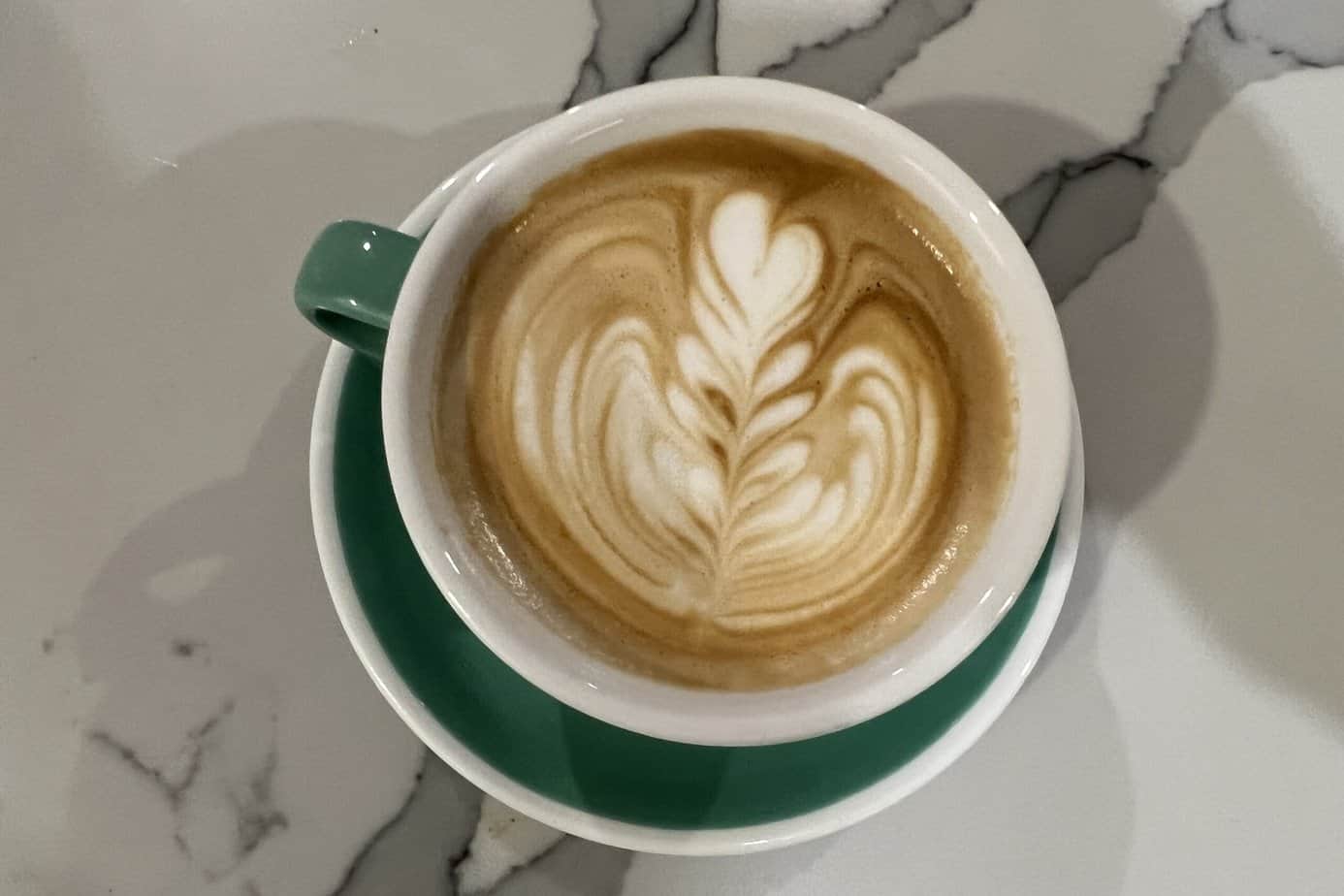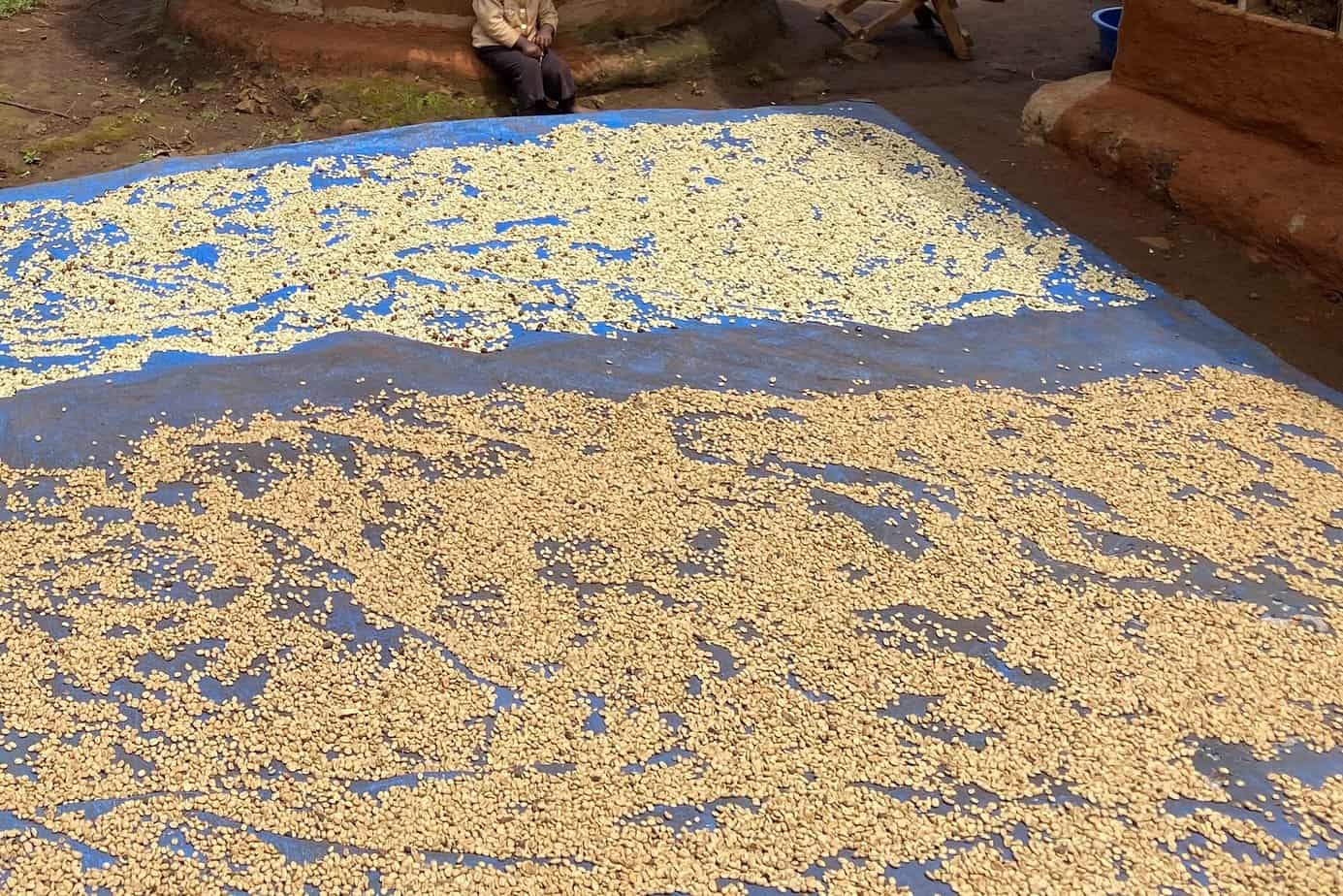As a barista, customers sometimes ask me, "how much caffeine is in decaf coffee?" This question seems simple, but the answer is more complex than you might think. As decaf coffee does contain small amounts of caffeine content, but it varies. In this post we'll uncover how much caffeine really is in decaf, and what methods of caffeine removal gets rid of the most caffeine.

A decaf latte I made at home. It still contains caffeine.
How much caffeine is in decafe coffee?
Decaf coffee is not entirely caffeine-free, contrary to popular belief. According to the United States Department of Agriculture, a typical 8-ounce cup of decaf coffee contains about 2 to 12 milligrams of caffeine, a fraction compared to the average regular coffee that packs between 95 to 200 milligrams. This content can vary based on factors such as the type of coffee bean, the decaffeination method used, and how the coffee is brewed. Read on to learn what processes get rid of more caffeine.
How is coffee decaffeinated?
Decaffeinated coffee, more colloquially referred to as 'decaf,' was born out of the necessity to offer the flavorful experience of coffee without the stimulating effects of caffeine. But how does one extract the caffeine from the beans without compromising the distinctive taste found in the many different types of coffee? The key lies within the decaffeination process.
There exist several methods for decaffeination, including the Swiss Water Process, Direct Process, Indirect Process, and CO2 Process.
Each technique uses varying solvents and processes to remove caffeine from the whole espreso beans, all while striving to preserve the rich flavor profile. These methods, while effectively reducing caffeine levels, inevitably have a significant impact on the final caffeine content of the decaf coffee.
Let's explore these four methods further.
1. Swiss Water Process
The Swiss Water Process is a chemical-free decaffeination method. Green (unroasted) coffee beans are soaked in hot water to dissolve the caffeine. This water is then passed through an activated charcoal filter, which traps larger caffeine molecules while allowing smaller oil and flavor molecules to pass through. The result is a caffeine-free green coffee bean with most of its original flavor profile intact.
The Swiss Water Process can eliminate up to 99.9% of caffeine, making it one of the most efficient decaffeination methods. It's popular with organic coffee brands due to its non-chemical nature.

Make sure you check how much caffeine is in your drink. As decaf methods affect the amount of caffeine.
2. Direct Process
In the Direct Process, also known as the European Method, green coffee beans from the coffee fruit are steamed and then rinsed with a solvent (typically ethyl acetate or methylene chloride) that binds to the caffeine molecules. The solvent is then evaporated, and the beans are steamed again to remove any residual solvent.
The Direct Process is efficient, removing up to 96-97% of the caffeine content. However, some people have concerns about the use of chemical solvents, even though they are considered safe at the levels used in decaffeination.
3. Indirect Process
The Indirect Process, also known as the Mexican or Traditional Method, involves soaking green coffee beans in hot water, similarly to the Swiss Water Process. The beans are then removed, and the water is treated with a solvent to remove caffeine. The beans are reintroduced to the water to reabsorb the flavor compounds.
The Indirect Process can eliminate about 94-96% of caffeine. It's less commonly used today due to its more time-consuming nature and the flavor alterations resulting from the soaking process.
4. CO2 Process
The CO2 Process, or Supercritical Carbon Dioxide Process, is a modern decaffeination method where green coffee beans are soaked in a mixture of water and carbon dioxide under high pressure. CO2, under these conditions, acts as a natural solvent, selectively attracting and bonding with the caffeine molecules. The CO2, carrying the caffeine, is then removed, and the beans are rinsed and dried.
The CO2 Process is considered a more 'natural' method as it doesn't involve synthetic chemicals. It's also more efficient in preserving flavor compared to some other methods. The CO2 process can remove up to 97-98% of caffeine, making it one of the most effective decaffeination methods.
Tips on Choosing Decaf Coffee
Choosing a decaf coffee that suits your palate and health preferences can seem daunting, given the misconceptions and wide range of decaffeination methods. When seeking a low-caffeine coffee, it's important to understand the caffeine content in your chosen decaf coffee. Look for brands that transparently provide this information and employ decaffeination processes known to preserve flavor while minimizing caffeine levels.
Consideration should also be given to the ethical sourcing of the coffee beans and the quality of processing. Brands that are Rainforest Alliance Certified or Fair Trade Certified are good choices as they support sustainable farming practices.
Conclusion
The journey of understanding the caffeine content in decaf coffee has taken us through a fascinating exploration of decaffeination methods. The type of process utilized significantly impacts the final caffeine content and flavor profile of your brew. With this knowledge at your fingertips, you're now equipped to make informed choices about your coffee selection.
Here's to better understanding our beloved beverage and to the enhanced enjoyment of every cup, whether it's regular or decaf!

